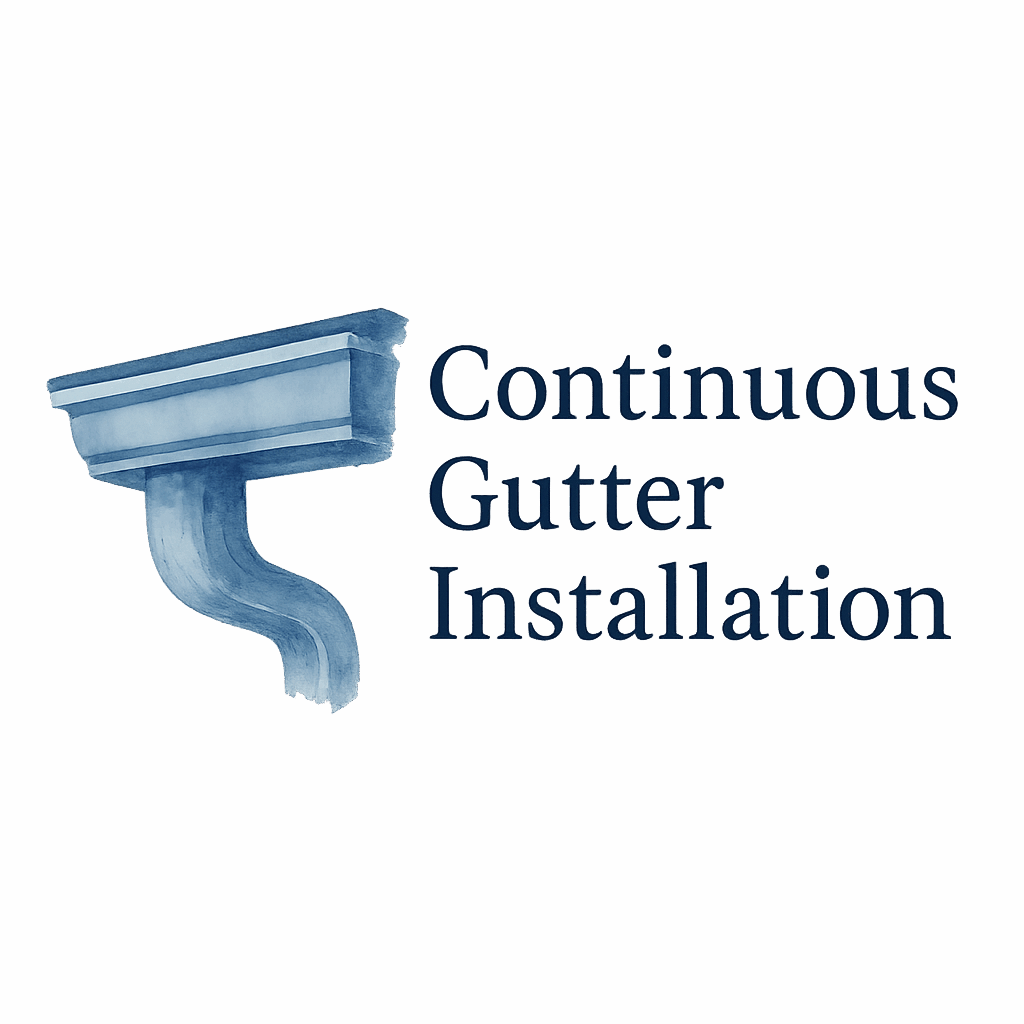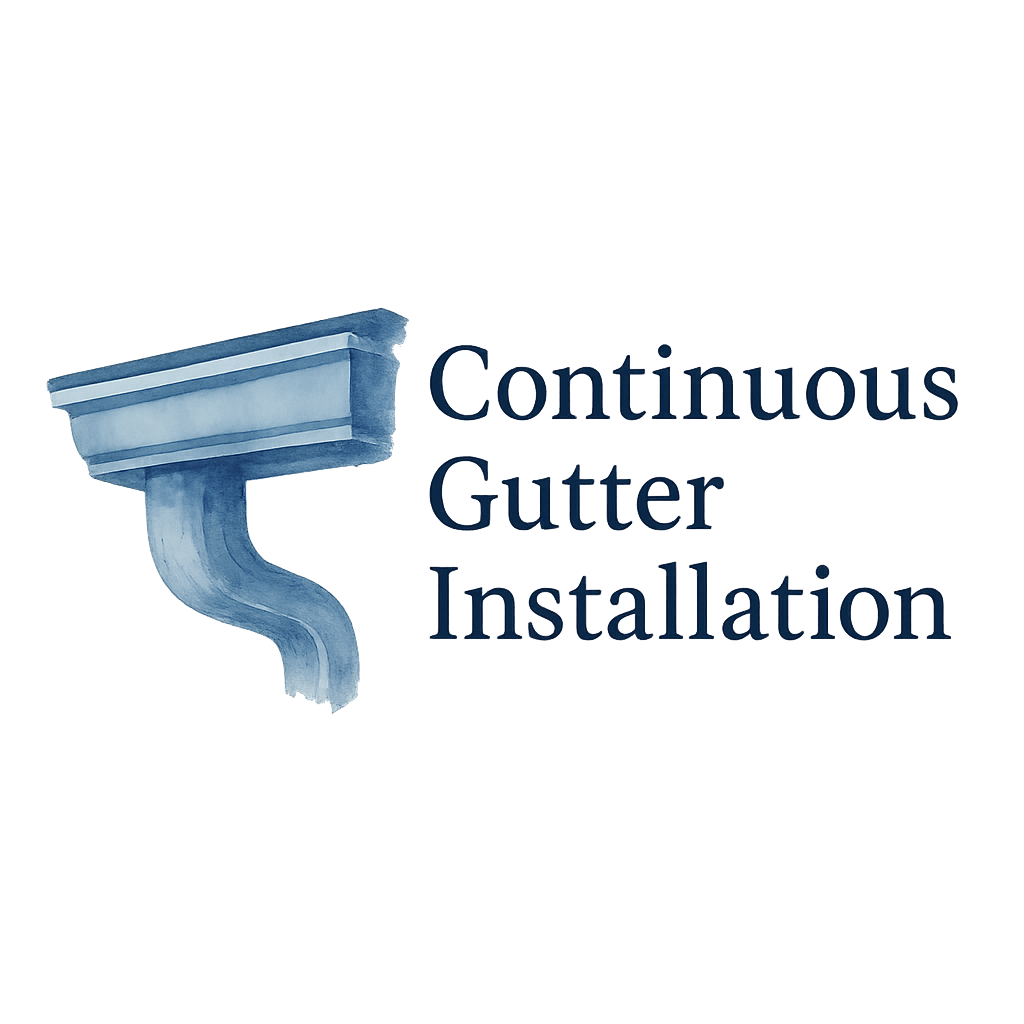When was the last time you gave your gutters some real attention? If you’re like most homeowners, your continuous gutter installation works quietly in the background until… well, something goes wrong. The truth is, gutters are like unsung heroes. They protect your foundation, siding, landscaping, and even your indoor spaces from water damage. But when they start showing signs of wear and tear, ignoring them could lead to serious—and expensive—problems.
In this article, we’ll walk through the six major signs that your continuous gutter installation needs repair. I’ll also cover the hidden red flags, cost considerations, and smart maintenance tips so you can keep your gutters in top-notch shape.
Why Continuous Gutters Are a Game-Changer for Homeowners
Continuous gutters, also called seamless gutters, are designed without the seams and joints that traditional gutters have. That means fewer leaks, less maintenance, and a sleeker look for your home.
Unlike sectional gutters, which are pieced together, continuous gutters are custom-fitted to your home. This makes them more durable and efficient at moving rainwater safely away from your foundation.
Understanding the Role of Continuous Gutter Installation
Before diving into the warning signs, let’s remind ourselves why gutters are so important.
Protection Against Water Damage
Rain might seem harmless, but when it’s not properly directed away from your home, it can wreak havoc. Continuous gutters funnel water away, protecting your basement, foundation, and exterior walls.
Enhancing Home’s Curb Appeal
Clean, well-installed gutters add to your home’s overall look. If they’re sagging or rusting, though, your home could look older than it really is.
Low Maintenance Benefits
Because they have fewer joints, continuous gutters collect less debris. That said, they still need care, especially if you’re in an area with heavy rainfall or lots of trees.
The Importance of Spotting Repair Signs Early
Think of gutter repair like going to the dentist—catch problems early, and it’s a small fix. Wait too long, and it turns into a major (and costly) issue. By learning the key signs, you’ll save yourself money, stress, and maybe even your home’s foundation.
Sign #1: Visible Cracks or Splits in Your Gutters
Small Cracks Can Lead to Big Damage
Even the tiniest crack in a continuous gutter can expand over time. What starts as a drip can turn into a steady stream, damaging your siding and foundation.
How to Inspect for Cracks Effectively
On a dry day, walk around your home and look closely at your gutters. Use a flashlight if necessary. During a rainfall, keep an eye out for water escaping in unusual spots.
Sign #2: Peeling Paint or Rust Spots
What Peeling Paint Means for Continuous Gutters
If you notice peeling paint near your gutters, it’s often a sign that water isn’t flowing properly. It could be seeping through cracks or overflowing due to clogs.
Rust and Long-Term Gutter Health
Rust spots are a clear red flag. Continuous gutters are usually aluminum, which resists rust, but if you see it forming, it’s a sign of standing water or coating damage.
Sign #3: Water Pooling Around Your Foundation
Why Foundation Damage is a Serious Concern
Pooling water near your home’s base is one of the most dangerous gutter problems. Over time, it can cause cracks in your foundation, uneven flooring, and even basement flooding.
Signs of Improper Water Flow
Look for soft soil, puddles, or mildew near your foundation after heavy rainfall. If you see them, your gutters might not be doing their job.

Sign #4: Gutters Sagging or Pulling Away from the Roofline
How Sagging Gutters Affect Drainage
Sagging gutters can’t channel water efficiently. Instead, they collect water in low spots, which only makes them sag more.
DIY Fixes vs Professional Repair
Sometimes tightening fasteners can fix minor sagging. But if large sections are pulling away, it’s best to call a professional to ensure your gutter system is securely reattached.
Sign #5: Frequent Clogs or Overflowing Water
Role of Debris and Lack of Protection Systems
Leaves, twigs, and dirt can pile up fast. Continuous gutters have fewer joints, but they’re not immune to clogs. Overflowing water is a surefire sign of blockage.
Gutter Guards and Screens to the Rescue
Installing gutter protection systems like guards or screens can drastically cut down on clogs. Check out this guide on gutter protection systems to see your options.
Sign #6: Interior Water Stains or Mold Growth
How Leaking Gutters Damage Walls and Ceilings
If you spot water stains on your ceiling or walls, your gutters may be leaking and allowing water to seep inside. This is one of the more urgent repair signs.
Health Risks Linked to Mold
Mold thrives in damp conditions. Beyond damaging your home, mold exposure can cause respiratory problems and allergies.
Additional Warning Signs You Shouldn’t Ignore
Loose Fasteners and Nails
Loose screws or nails sticking out can signal that your gutter system isn’t securely in place.
Strange Noises During Rainfall
If you hear splashing, dripping, or rushing water in unusual places, your gutters might be leaking or misaligned.
Landscaping Erosion Near Gutters
Dead plants, washed-out mulch, or soil erosion near the base of your home means your gutters aren’t directing water properly.
How to Decide Between Gutter Repair and Replacement
When Repairs Are Enough
If damage is minor, such as a small crack or loose bracket, repairs are often sufficient.
When Replacement Saves Money in the Long Run
If your gutters are old, rusting, or frequently clogging, investing in a replacement may actually save you more money than repeated repairs. For a deeper look, explore this resource on gutter replacement and costs.
Cost Considerations for Gutter Repairs
Factors That Influence Repair Costs
The cost depends on gutter material, damage severity, and whether you hire a pro or DIY.
Affordable Gutter Options
If you’re on a budget, explore options like affordable gutter systems or budget-friendly gutter solutions.
How Gutter Protection Systems Extend Gutter Life
Gutter guards, screens, and covers keep debris out and reduce the frequency of cleaning. Learn more about debris control solutions that prevent common gutter issues.
Seasonal Care Tips for Continuous Gutters
Regular cleaning in spring and fall, checking after storms, and scheduling annual inspections will keep your gutters healthy. For a detailed guide, see gutter maintenance tips.
Safety Tips for Homeowners Checking Gutters
Climbing ladders can be dangerous. Always use a sturdy ladder, wear gloves, and avoid working alone. If in doubt, hire a pro. Check out these gutter safety guidelines.
Hiring Professionals vs DIY Gutter Repairs
DIY repairs can save money for minor fixes, but professional services ensure long-term durability. If you’re not comfortable with heights or tools, calling a pro is the safer choice.
Conclusion
Your continuous gutter installation is one of the most vital defenses your home has against water damage. By spotting the six major signs—cracks, peeling paint, pooling water, sagging, frequent clogs, and interior water stains—you can act quickly and save yourself from hefty repair bills.
Don’t ignore the smaller red flags either. Whether you choose to repair or replace, remember that preventive care, seasonal maintenance, and protection systems will extend your gutter’s lifespan.
For more insights on gutter styles, protection, and cost-effective solutions, explore Continuous Gutter Installation.
FAQs
1. How often should I inspect my continuous gutters for damage?
At least twice a year—once in spring and once in fall. After major storms is also a good idea.
2. Can continuous gutters be repaired, or do they always need replacement?
Most minor issues like cracks or sagging can be repaired. Replacement is only necessary when damage is widespread.
3. What’s the average cost of repairing continuous gutters?
It varies, but most repairs fall between $150–$500 depending on the extent of damage and materials.
4. Are gutter protection systems worth the investment?
Yes, they reduce clogs, minimize cleaning, and extend the lifespan of your gutters.
5. Why do my gutters overflow even though I cleaned them?
It could be a slope issue, improper installation, or hidden clogs in the downspouts.
6. Can gutter damage affect my home’s interior?
Absolutely. Leaking gutters can cause water stains, mold, and even structural damage inside your home.
7. How do I know if I need professional help with my gutters?
If you see sagging, rust, or water near your foundation—or if you’re not comfortable doing repairs yourself—it’s time to call a pro.


